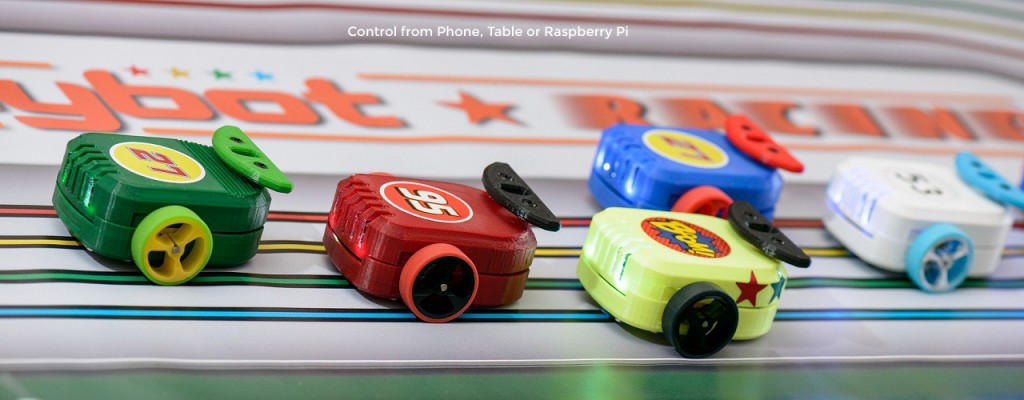Expected to hit crowd funding soon, Cannybots are open source, 3D printable toy robots that can be printed on any desktop system and programmed using simple (and less simple) programming interfaces such as Arduino, Blockly, Python, mbed and Scratch. Although they are already for sale on the Cannybots official website, availability is currently limited to educators, code clubs, and Makers . In fact, the bots created by Anish Mampetta and Wayne Keenan, with help from Steve Wiseman (Hardware), are intended as tools to help children familiarize themselves with programming in the classrooms.
The idea of 3D printable robots using low-cost electronic components is not new and it is rapidly taking hold, especially among the newer generations. The racing robots can be programmed to follow lines on custom-made tracks (also available from Cannybots) and controlled using a smartphone, tablet, PC, or even Raspberry Pi controllers.
Compared to other similar robots, they seem to be significantly more responsive, which is key to drawing enthusiasm and engagement. The Cannybot Hardware consists of a small, single board controller called the BlueBrain, which incorporates a powerful ARM processor, Bluetooth (4.0) and the motor controllers. It is also responsible for controlling the line sensors and keeping the bot on track.
The electronics has to be ordered in standard kits. The 3D printed parts, which are available on Github as a free download, include structural components, such as the chassis, top cover, and wheels. Available packages include a £40 kit with 3D printable models, a £50 kit with 3D printed models, and a £20 kit for the stand alone BlueBrain. PVC tracks designed by independent artists Cristina Arroyo, Sean McMurchy, and David Copsey are available for an additional £30.
The project is reminiscent of the 3D Racers 3D printable toy cars, which reached its Indiegogo objective and is currently in development. There is little doubt in my mind that these will be the toys of future generations and that the race has begun for which toys will make it into homes first. Judging by the videos, Cannybots will first pass through the classroom, competing in another race: the race to help students keep up with new technologies, such as programming interfaces and digital manufacturing, that will be the core of tomorrow’s workplace.




